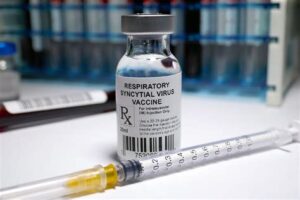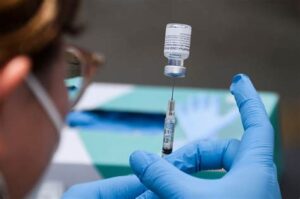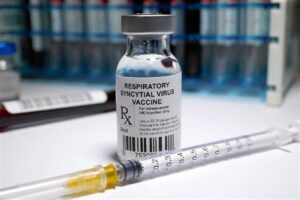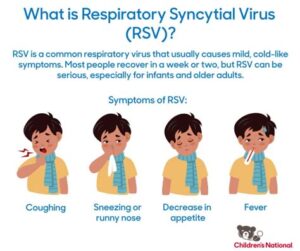Learn about the importance, techniques, common errors, effectiveness, and storage of reconstituted vaccines to ensure optimal immunization outcomes.As the healthcare community increasingly recognizes the importance of vaccinations in preventing respiratory syncytial virus (RSV), the process of vaccine reconstitution plays a critical role in ensuring efficacy and safety. Proper reconstitution—a method that involves mixing a vaccine powder with a diluent—is essential for achieving the right concentration and effectiveness of the RSV vaccine. However, it is not without its challenges; many practitioners may face common pitfalls that can affect the outcome. In this blog post, we will explore the significance of careful vaccine reconstitution, delve into the techniques required for success, highlight frequent errors to avoid, and discuss the importance of proper storage for maintaining vaccine potency. By understanding these essential aspects, healthcare professionals can better contribute to the fight against RSV.
Importance of Vaccine Reconstitution
Vaccine reconstitution is a critical process in the administration of vaccines, particularly those that are lyophilized (freeze-dried). This process ensures that the vaccine is prepared correctly and is essential for maximizing the effectiveness of the vaccine being administered.
- Ensures Correct Dosage: Proper reconstitution allows for the accurate measurement of the vaccine, ensuring that each dose contains the appropriate amount of antigens required for an effective immune response.
- Maintains Stability: Different vaccines have varying stability and efficacy profiles. Reconstitution must be performed per manufacturer’s guidelines to maintain the stability and active components of the vaccine.
- Affects Immune Response: Correct preparation of the vaccine can significantly impact the patient’s immune response, ultimately determining the efficacy of the vaccination.
The process of vaccine reconstitution is often overlooked; however, it is a crucial step that cannot be ignored. Proper techniques and adherence to protocols can prevent potential errors that might compromise vaccine effectiveness and patient safety.
Proper Technique for Vaccine Reconstitution
Reconstituting a vaccine, especially for an important vaccination like the RSV vaccine, requires precision and attention to detail. The technique used in vaccine reconstitution directly impacts the vaccine’s effectiveness. Therefore, following proper procedures is vital for ensuring that the vaccine is safe and effective for recipients.
- Preparation: Gather all necessary materials, including the vaccine vial, diluent, sterile syringe, and alcohol swabs. Ensure that the workstation is clean and organized.
- Inspect the Vials: Before reconstitution, check both the vaccine and diluent vials for any signs of damage or contamination. Ensure that the vials are within their expiry date.
- Wash Hands: Always wash your hands thoroughly before starting the reconstitution process to prevent contamination.
- Reconstitution Technique: Using a sterile syringe, draw up the appropriate amount of diluent. Inject the diluent into the vaccine vial gently, avoiding excessive agitation of the contents. Swirl the vial gently to mix.
- Draw the Vaccine: Once mixed, use a new sterile syringe to draw the reconstituted vaccine for administration.
By adhering to this proper technique for vaccine reconstitution, healthcare providers can help ensure that the vaccine remains potent and safe. Knowledge of this technique is crucial in delivering vaccines like the RSV vaccine effectively.
Common Errors in Vaccine Reconstitution
Vaccine reconstitution is a vital process in ensuring the effectiveness of vaccines. However, there are several common errors that can occur during this procedure, potentially compromising the integrity and efficacy of the vaccines. Understanding these errors is essential for healthcare providers to maintain high standards of patient care.
One of the most frequent errors is the incorrect addition of diluent. This can happen when the wrong volume is used or when an incorrect diluent is selected. Always verify the recommended volume and type of diluent before commencing the reconstitution process.
Another common mistake is insufficient mixing after reconstitution. Thorough mixing is crucial to ensure the vaccine components are evenly distributed. A lack of adequate mixing can lead to inconsistent dosages, which may affect the vaccine’s effectiveness.
Additionally, improper storage conditions after reconstitution can also result in ineffective vaccines. Vaccines should be stored according to the manufacturer’s recommendations, and reconstituted vaccines should generally be used immediately or stored under specific conditions to maintain their efficacy. Ensuring compliance with these guidelines minimizes the risk of vaccine degradation.
| Error Type | Description | Prevention |
|---|---|---|
| Incorrect Diluent | Using the wrong type or volume of diluent. | Always check the manufacturer’s instructions. |
| Insufficient Mixing | Not mixing properly after reconstitution. | Follow proper mixing guidelines. |
| Improper Storage | Failing to store reconstituted vaccines correctly. | Observe recommended storage conditions. |
Addressing these common errors in vaccine reconstitution is crucial for maintaining vaccine effectiveness and ensuring patient safety. By identifying the potential pitfalls and implementing preventive measures, healthcare providers can greatly enhance the reliability of vaccinations.
In summary, awareness and education surrounding these errors can lead to improved practices in vaccine administration. Consistent training and adherence to guidel
Effectiveness of Reconstituted Vaccines
The effectiveness of reconstituted vaccines is a critical aspect of immunization that cannot be overlooked. Properly reconstituted vaccines ensure that the correct dosage and potency are administered, maximizing the patient’s immunity against diseases. When vaccines are reconstituted correctly, they can elicit a robust immune response, thereby providing better protection.
Research has shown that the effectiveness of vaccines can be significantly diminished if they are not reconstituted accurately. Factors such as the type of diluent used, the temperature at which the vaccine is stored, and adherence to the recommended reconstitution techniques all play a critical role in determining how well the vaccine will work.
It’s also important to consider that some vaccines have specific time limits after reconstitution. Administering a vaccine beyond this timeframe may lead to reduced effectiveness, underlining the importance of following the manufacturer’s guidelines. In summary, strict adherence to proper reconstitution protocols ensures that reconstituted vaccines maintain their intended effectiveness, offering both individuals and communities essential protection against infectious diseases.
Storage of Reconstituted Vaccines
Proper storage of reconstituted vaccines is crucial to maintain their effectiveness and ensure patient safety. Once a vaccine has been reconstituted, it is sensitive to various environmental factors that can compromise its potency. Thus, adhering to the recommended storage guidelines is essential.
Reconstituted vaccines should be stored in a refrigerator at a temperature range of 2°C to 8°C (36°F to 46°F). It’s vital to avoid freezing, as this can cause the proteins in the vaccine to denature and lose their efficacy.
- Store in the main compartment of the refrigerator, not in the door.
- Regularly monitor the temperature of the storage unit using a reliable thermometer.
- Avoid exposure to light, which can degrade many vaccines.
In the case of any interruptions in storage due to power outages or equipment failure, follow the guidelines provided by the vaccine manufacturer regarding the stability of the reconstituted product. Remember that timely administration is vital, so be vigilant about the expiry dates and recommended usage windows of reconstituted vaccines.
Frequently Asked Questions
What is RSV and why is it significant?
RSV, or respiratory syncytial virus, is a common virus that causes respiratory infections, particularly in young children, elderly, and immunocompromised individuals. Its significance lies in its ability to cause severe respiratory illness, leading to hospitalizations and, in some cases, fatalities.
What does reconstitution of an RSV vaccine involve?
Reconstitution of an RSV vaccine involves mixing a dry powder vaccine with a diluent to prepare it for administration. This process must be done carefully to ensure that the vaccine remains effective and safe for use.
What are the typical ingredients found in an RSV vaccine?
An RSV vaccine typically contains inactivated virus components or modified live viruses, adjuvants to enhance the immune response, stabilizers, and preservatives to ensure the vaccine’s integrity during storage and administration.
Who is recommended to receive the RSV vaccine?
The RSV vaccine is primarily recommended for high-risk groups, including infants, young children under two years old, elderly individuals, and those with certain underlying health conditions.
How effective is the current RSV vaccine?
The effectiveness of the RSV vaccine varies depending on the formulation used and the population studied, but recent vaccines have shown promising results in reducing the incidence and severity of RSV infections.
Are there any side effects associated with the RSV vaccine?
Side effects of the RSV vaccine are generally mild and can include soreness at the injection site, fever, irritability, or fatigue. Severe reactions are rare but can occur in some individuals.
What is the future outlook for RSV vaccines?
The future outlook for RSV vaccines is promising, with continued research focused on developing more effective vaccines and expanding coverage to wider populations, including pregnant women to protect newborns.





